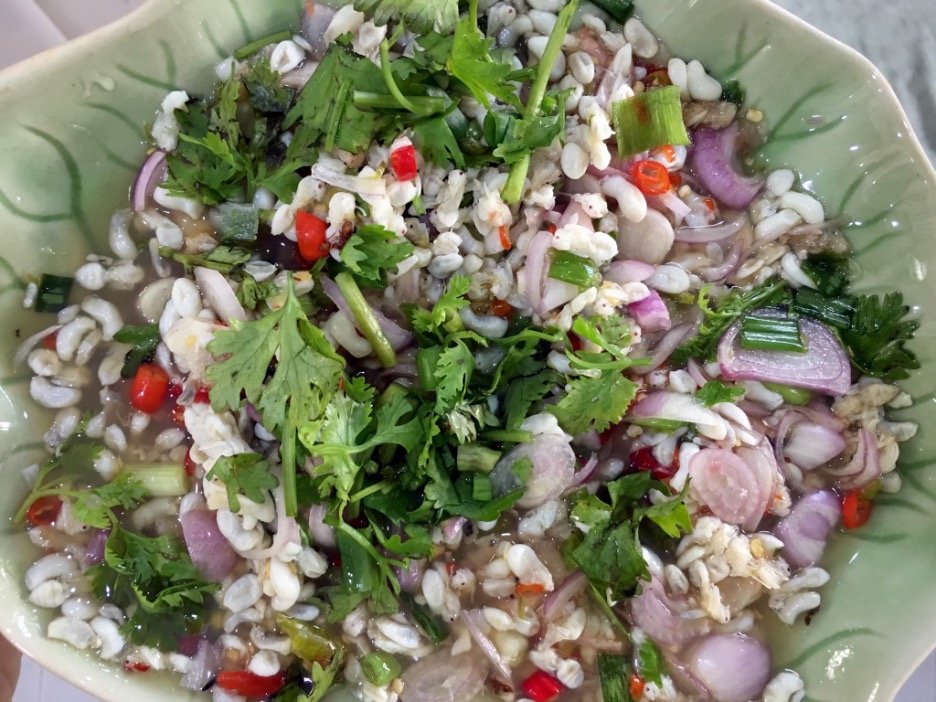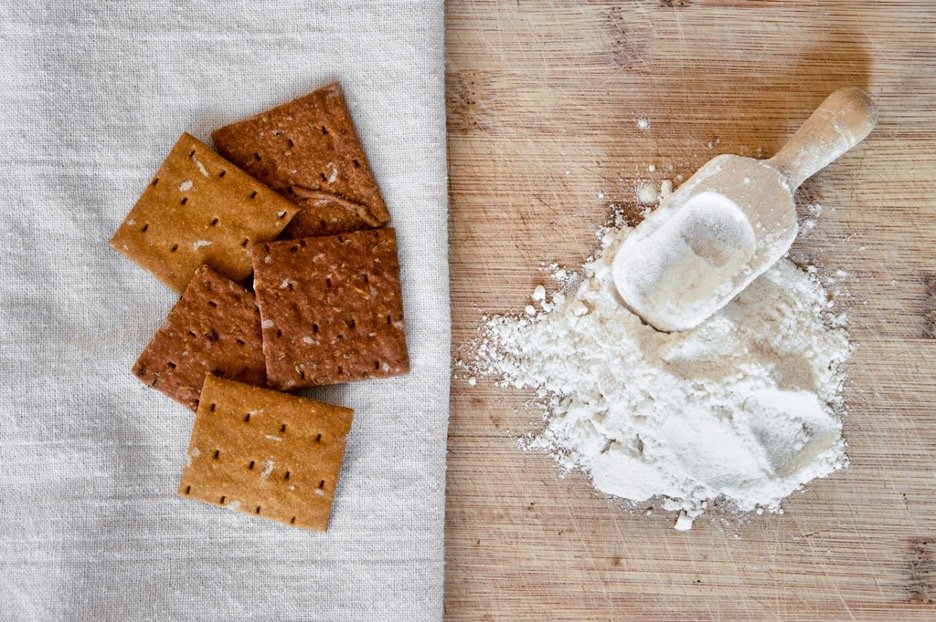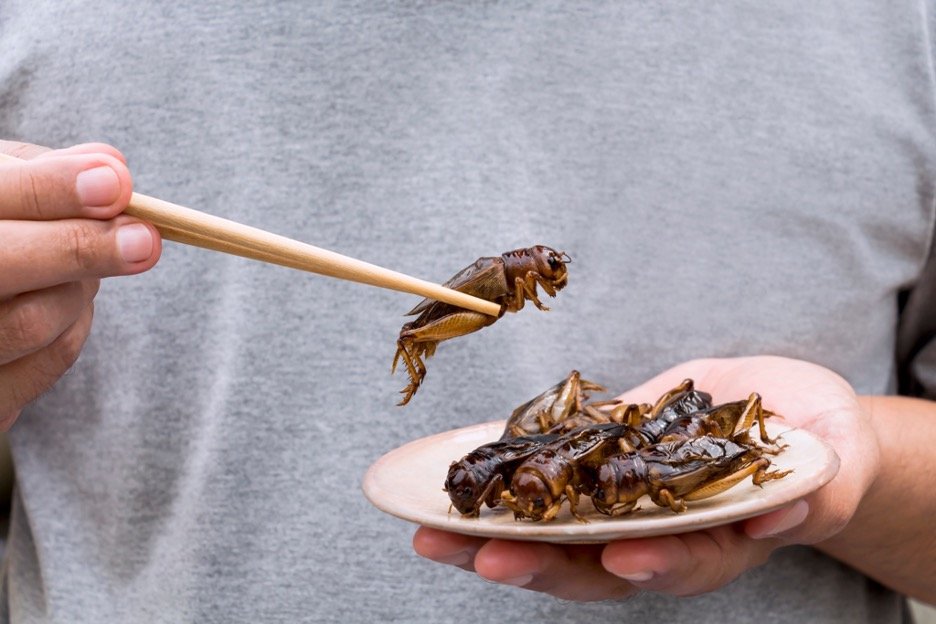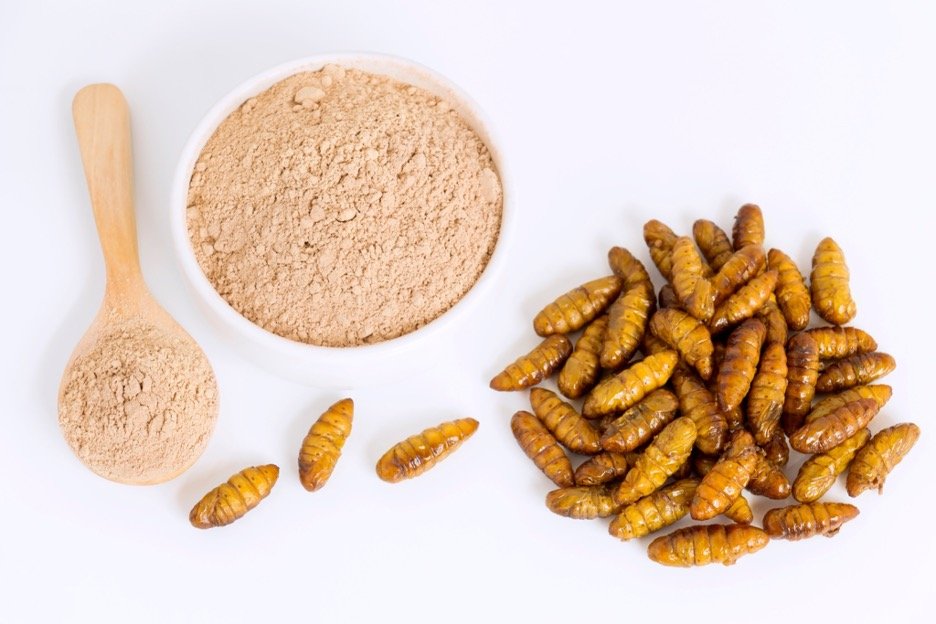Edible Thai Insects as a Sustainable Superfood
While insects are eaten in certain areas of Thailand, the majority of Thais look at insects the same way people in most Western countries do: with disgust.
However, insects may very well be a major source of protein in the future. It’s time to put aside our misconceptions about them and get out from under our rocks (just like the insects we’ll be looking at).
Here, we’ll be looking at the reasons why we should take insect protein seriously, traditional and innovative uses of edible insects in Thailand, and delicious examples around the world.
Edible Thai Insects as a Sustainable Superfood
What makes insect protein better?
Insect ingredients in Thai cuisine
Red ant eggs or kai mod daeng
Subterranean ants or maeng mun
Large cockchafer or maeng plud
Giant water bug or maeng da na
Exciting developments in Thai insect protein
Khon Kaen University
Chiang Mai University
Chutikarn Farm
Star Bugs
Edible insects around the world
Gifu, Japan
Seattle, Washington, U.S.A.
What makes insect protein better?

You may have heard that insects require far less nutrients to produce the same amount of protein as conventional livestock. In fact, it’s estimated that insects are 12-25 times more efficient at producing protein. However, they also produce more protein per unit volume which makes them a more efficient source of protein than most livestock as well.
They also contain unsaturated fatty acids, like fish. Add this to the fact that insects can be fed using agricultural scraps and that they produce far less waste, and you’ve got yourself something of a superfood.
As it stands, 80% of the world’s farmland is dedicated to raising livestock. This tremendous demand on land use has resulted in the destruction of forests and other ecosystems all around the world. As the world’s population continues to rise, this current model just isn’t sustainable. Nonetheless, protein is a macronutrient we need to survive.
Insect ingredients in Thai cuisine

The use of insect ingredients in Thai cuisine tends to be niche or regional, adding another dimension to Thai gastronomy and how dishes vary across the country. To the right Thai chef, insects are much more than deep-fried novelties, but are purposeful ingredients used in a variety of recipes.
Red ant eggs or kai mod daeng
One of the most widely used insect ingredients is red ant eggs or kai mod daeng. Red ant eggs are versatile and can fit into a variety of dishes, particularly those from northeastern Thailand or the Isan region. Unfortunately, it’s a seasonal ingredient only available during the summer.
The soft, juicy texture and slightly acidic taste makes it a perfect match for the typically sour & spicy palette of northeastern dishes. Common Isan menu items that can incorporate red ants eggs include papaya salad (somtam), minced meat salad (larb), and tom yum soup.In central Thailand, kai mod daeng isn’t as prominent, but some restaurants use them in omelets (kai jeow kai mod daeng). In southern Thailand, meanwhile, red ant eggs are poached in coconut milk to make tom kati kai mod daeng, a dish that is functionally similar to a dessert.
Subterranean ants or maeng mun
In northern Thailand, subterranean ants or maeng mun are considered rare and special, available only from February to March. Although similar to red ants, maeng mun are much harder to hunt down, requiring hours to excavate from their underground nests. The ant eggs are typically fermented for two days to make a spicy salad called maeng mun jom. Female subterranean ants are usually made into a paste and served with vegetables, as their male counterparts are too bitter for consumption.
Large cockchafer or maeng plud
The large cockchafer or maeng plud is favored in southern Thailand (🇹🇭), with high demand and scarce supply driving prices higher than some pork products. Maeng plud is yet another seasonal delicacy, only available from April to May.
The creamy maeng plud is most commonly stir-fried in coconut milk to make maeng plud pad kati. For those who prefer spicy foods, they are also added to sour curries to make gaeng som maeng plud.
Giant water bug or maeng da na
The giant water bug or maeng da na is one of the most common insect ingredients in Thailand. It can be found in most fresh markets as a snack, either boiled, fried, roasted, or steamed. Maeng da na is considered well-suited to commercial farming (🇹🇭), requiring low initial investment while providing a high profit margin.
Female giant water bugs are usually eaten on their own, while their male counterparts are usually added to chili paste to make nam prik maeng da. The unique, sweet aroma produced by its pheromones lends an exotic herbal taste that distinguishes it from other chili pastes.
Exciting developments in Thai insect protein

While crunchy insect delicacies are easily found in rural and urban markets, they merely represent the humble beginnings of the edible insect movement here, with crickets getting special attention.
Khon Kaen University
In hope of guiding industry growth, Khon Kaen University (KKU) researchers collaborated with the Food and Agriculture Organization of the United Nations (FAO) to establish a practical manual for cricket farming.
The manual leverages over 25 years of Thai cricket farming expertise, with Prof. Dr. Yupa Hanboonsong, Head of KKU’s Department of Entomology and Plant Pathology, serving as one of the lead authors. The manual is intended as a guide for cricket farming policymaking and to encourage businesses to explore this sustainable solution to food security.
Chiang Mai University
To help drive Thailand’s agriculture industry towards sustainable growth, Chiang Mai University (CMU)signed a memorandum of understanding with agro-industrial and food conglomerate Charoen Pokphand Foods PCL (CP Foods) for the development of insect-based protein.
These would specifically be developed from the Black Soldier Fly (Hermetia illucens) and embrace the Bio-Circular-Green Economy (BCG) Model. CMU is actively working with CP Foods to explore commercial opportunities from the research.
Read More: The BCG Impact on Thailand’s Food Industry
Chutikarn Farm
Based in Sukhothai province, Chutikarn Farm is known for its cricket-based snacks, chili paste, and protein powder, which boasts more protein and fiber than an equivalent serving of beef or fish. The cricket farm has been certified by the Thai Ministry of Agriculture and Cooperatives for Good Agricultural Practices (GAP) as well as the Thai Food and Drug Administration (FDA) for food safety.
Star Bugs
Another notable mention is Star Bugs, a Nonthaburi-based brand that has successfully exported cricket flour products all over the globe. Its cricket flour has been used to make breads, pasta, crackers, ramen noodles, energy bars, and protein shakes.
Just like Chutikarn Farm, they are certified GAP and have passed FDA standards, with the added benefit of being approved for Good Manufacturing Process (GMP).
In addition, the Thai government has been running campaigns to raise awareness around the benefits of insects, highlighting their many sustainable advantages and trying to overcome people’s misconceptions around them.
As Thailand contends with deforestation, switching from conventional livestock to insect protein is a strong solution for farmers. They’ll be able to reduce their overhead costs, lower their required plot size, and get a headstart into this growing market.
Edible insects around the world
Around 2,000 insect species are eaten worldwide. In many countries, insects are actually growing in popularity. Surely, some of these must be delicious? Let’s take a look.
Gifu, Japan

Wasp larvae (or hebo) are considered a creamy delicacy. There’s even an entire festival around it where lucky visitors can try hebo gohei mochi or grilled sticky rice pressed onto a stick and lathered in a miso sauce made with mashed hebo.
Seattle, Washington, U.S.A.

In the United States, the public perception around insects is changing as well. At T-Mobile Park (formerly Safeco Field), the baseball stadium that’s home to the Major League Baseball’s Seattle Mariners, fans can enjoy fried crickets in chili-lime salt seasoning. Over one million of these crickets are sold each year.
Insects offer a surprising range of gastronomic flavors, and when cooked properly, they’re delicious. MICHELIN-starred restaurants all over the world helmed by renowned chefs like Peter Gorton and Roberto Ruiz have been known to introduce insects onto their menus.

Insect protein is the future. It’s more sustainable than conventional meat, it’s healthy, it’s delicious, and now, with its many new processing techniques, it doesn’t even look like insects anymore.
Insects may very well be a huge boon for farmers, the food market, and the manufacturing industry in the long term, especially with the global insect industry projected to see 26.5% CAGR over the next five years to reach US$4.63 billion in sales by 2027.
We need to start changing our mindsets. Thailand is poised to make that leap. Will you?